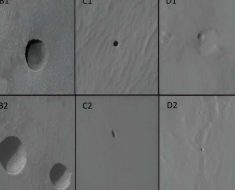In our view, there are two particularly encouraging avenues for the enhancement of our proof-of-concept prototype ClimSight that merit further elaboration. First, it looks promising to expand the information available for the specified location, for example using high-resolution geographical data and highly detailed climate information. Projects like the Coordinated Regional Downscaling Experiment (CORDEX), which downscale climate data for various global regions, can offer valuable support in this endeavor for some regions. While CORDEX data do not cover the whole globe, one can select CORDEX high-resolution simulations when they are available for the region and fall back to global, low-resolution simulations otherwise. However, if our goal is to “deliver consistent localized information worldwide“5 and hence provide equal opportunities for everyone to prepare for climate change, exploring the utilization of data from forthcoming kilometer-scale global models, made accessible in the future through initiatives like the EU’s Destination Earth6,7, will be imperative.
Secondly, one current important limitation of the approach lies with the limitations on the amount of data that can be transmitted in a query to LLMs as context. For standard OpenAI GPT-4, this limit currently stands at 8,000 tokens (equivalent to about 32,000 characters), while the special version of the GPT-4, with a larger context, become available recently. A promising avenue to develop our prototype further would be to exploit user-relevant information from trusted sources, including scientific publications, reports, and local regulations, integrated into the final prompt. Using several preliminary requests to the LLM to first optimize the level of summarization for any contextual information, both geographical and user-specific data could help optimize the amount of information transmitted in the last step. Multi-agent conversation where LLMs with different roles or specializations communicate with each other to achieve common goals8,9, could be very beneficial. Generation of several reports and letting LLM evaluate and select the best one could improve the quality and reduce hallucinations.
Many other directions for expanding the scope of the system, and adding more detail can be envisaged. Transitioning to open-source models, such as LLAMA210 can democratize ClimSight development by allowing more people to access, modify, and improve the system. It is easier to further fine-tune open-source models (compared to closed solutions like GPT-4) and develop sector-specific extensions tailored to domains like agriculture or urban planning, or make a country-specific version. Fine-tuned models can be used to create separate, targeted services, or work together in one system to generate a better final report. The current simple extraction of monthly means for two periods can be extended by more comprehensive statistical data analysis involving time series from many models, ensemble members, and neighboring regions. Visualization of data also can be expanded, showing maps, statistics, and uncertainties.
Arguably more important than expansion, however, is the task of ensuring that users are aware of the degree of reliability of the information they receive. Large language models can occasionally generate erroneous information and fabricate facts, and climate projections are subject to their own set of inherent uncertainties and potential biases. It would be important to make the reliability of the system’s output intuitively transparent, for example by providing a range of possible future scenarios rather than just one recommendation. Furthermore, incorporating information on local model biases, drift, and ensemble spread would add confidence and trustworthiness to the recommendations communicated to the user.





